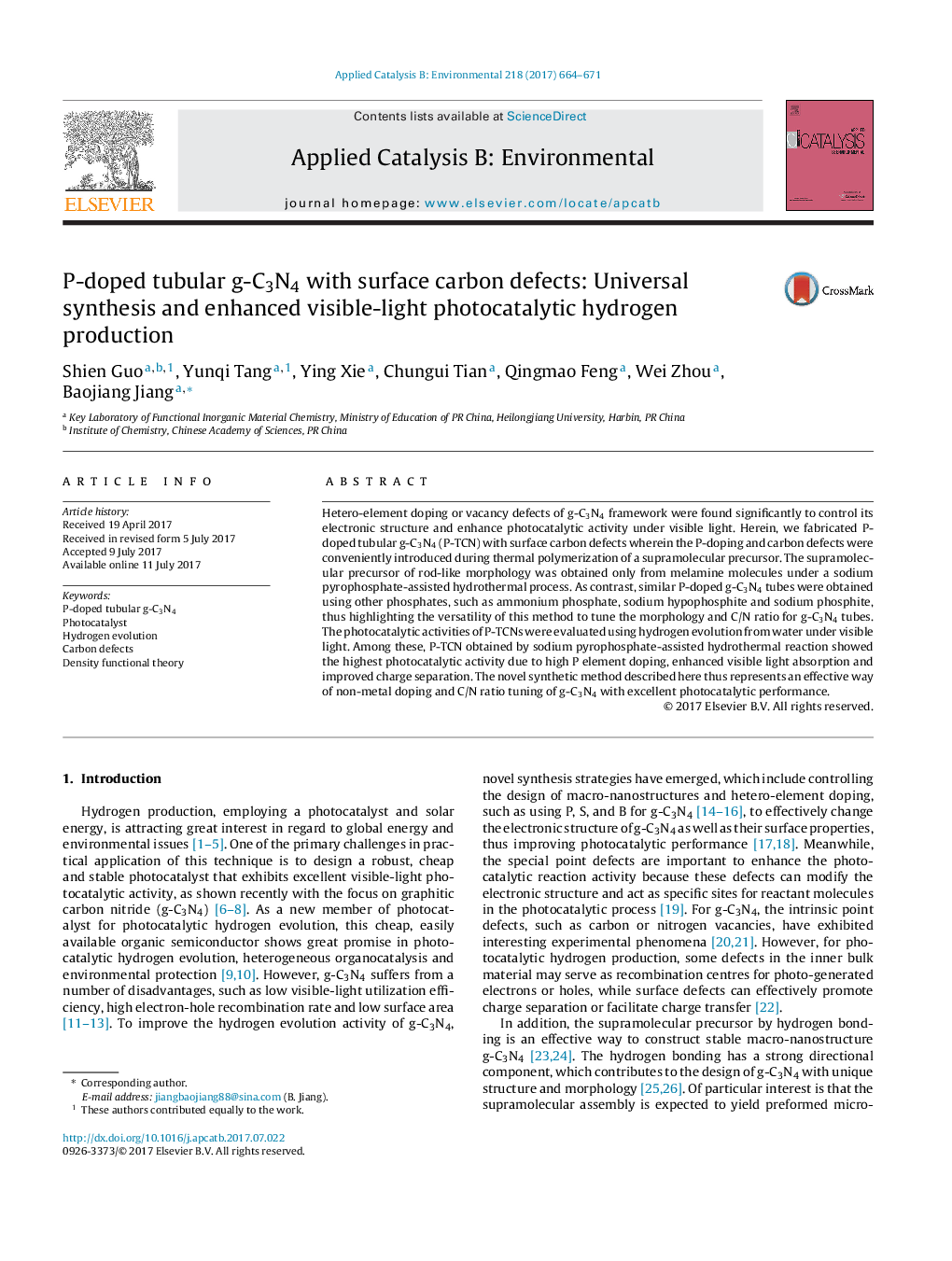| Article ID | Journal | Published Year | Pages | File Type |
|---|---|---|---|---|
| 6453821 | Applied Catalysis B: Environmental | 2017 | 8 Pages |
â¢Phosphorus doping and carbon defects can be introduced within g-C3N4 by phosphorus-contained compounds-assisted hydrothermal process.â¢The photocatalytic hydrogen evolution activity of P-doped tubular g-C3N4 was greatly improved.â¢Density Functional Theory calculations were used to confirm the energy band structure.
Hetero-element doping or vacancy defects of g-C3N4 framework were found significantly to control its electronic structure and enhance photocatalytic activity under visible light. Herein, we fabricated P-doped tubular g-C3N4 (P-TCN) with surface carbon defects wherein the P-doping and carbon defects were conveniently introduced during thermal polymerization of a supramolecular precursor. The supramolecular precursor of rod-like morphology was obtained only from melamine molecules under a sodium pyrophosphate-assisted hydrothermal process. As contrast, similar P-doped g-C3N4 tubes were obtained using other phosphates, such as ammonium phosphate, sodium hypophosphite and sodium phosphite, thus highlighting the versatility of this method to tune the morphology and C/N ratio for g-C3N4 tubes. The photocatalytic activities of P-TCNs were evaluated using hydrogen evolution from water under visible light. Among these, P-TCN obtained by sodium pyrophosphate-assisted hydrothermal reaction showed the highest photocatalytic activity due to high P element doping, enhanced visible light absorption and improved charge separation. The novel synthetic method described here thus represents an effective way of non-metal doping and C/N ratio tuning of g-C3N4 with excellent photocatalytic performance.
Graphical abstractDownload high-res image (167KB)Download full-size image
